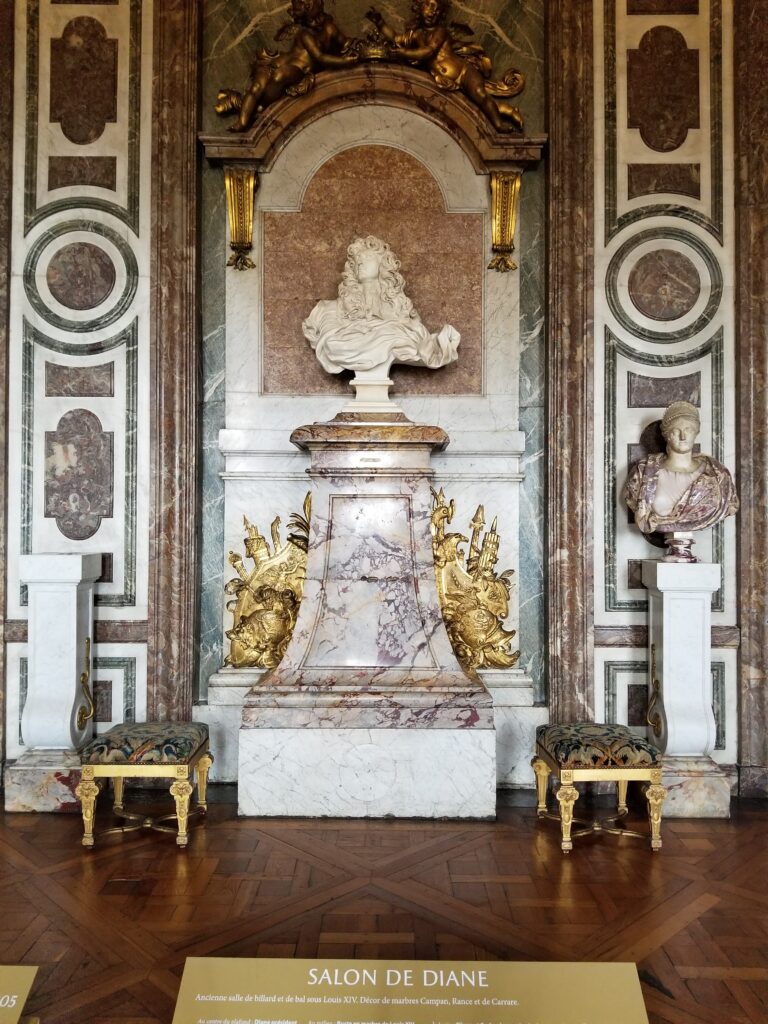Was Louis XIV truly the all-powerful “Sun King” of absolute legend, or was his authority more constrained than commonly believed? Peter Paccione’s article, “Was Louis XIV really an absolute monarch?“, confronts this fascinating question. He dissects the enduring power of provincial estates and parlements, the widespread nature of venality of office, and the persistent influence of the nobility that collectively limited royal power. If you’ve ever wondered about the true extent of power in early modern Europe, this analysis offers a fresh and compelling perspective.

Was Louis XIV really an absolute monarch?
Louis XIV has been traditionally regarded as the epitome of the “absolute” monarch. But just how absolute was he? Recent scholarship has revised the traditional picture of Louis, showing that he was not as “absolute” as he has been portrayed.
Although the Estates General had last met in 1614 and would not meet again until 1789, the monarchy had to cooperate with the several remaining provincial estates. By the eighteenth century, there were four grand pays d’états: Brittany, Burgundy, Provence and Languedoc. The primary function of the estates was to vote taxes for the royal government, and they also played an important role in the administration of their provinces.[1] In addition to their traditional functions of giving consent to and the administration of taxation, the estates had taken on the borrowing of money on behalf of the royal government. In the late seventeenth century, the estates, trying to avoid higher direct taxes, “acquired a significant financial credit.” The finance ministry “used the credit of the estates to pledge loans on behalf of the king.”[2] In 1673, the estates of Languedoc borrowed 1,600,000 livres from Genoese banks to complete the construction of the Midi canal. In 1690, the Languedoc estates borrowed one million livres for the royal government; in 1707, another million; and in 1715, another loan of 2,400,000 livres.[3] Arlette Jouanna writes that the right of the provincial estates to consent to taxation made them “the conservators of the French constitutional tradition.” “A whole other ideological current even tended, at the end of the old regime, to make this right an essential element of the French constitution.” With the Estates General in abeyance, the parlements also claimed “to embody this fundamental right, since, they asserted, all fiscal edicts had to be registered by them. But they also recognized that, in the pays d’états, the power to consent legitimately belonged to the provincial assemblies.”[4] Writing of the Burgundy estates, Julian Swann observes that they “had proved themselves to be flexible and effective in their response to Louis XIV’s financial demands, proving that representative institutions could be a valuable partner for the absolute monarchy.”[5]
Other institutions which the crown had to deal with were the sovereign courts, primarily the parlements, the most important of which was the Parlement of Paris. During the medieval period, the parlements had acquired the right to register royal legislation and to remonstrate against any legislation they objected to. After their defeat in the Fronde in 1653, the parlements retained the rights of registration, remonstrance, issuing judicial decrees, and holding plenary sessions.[6] During the sixteenth century, the judges of the parlements had obtained the right to purchase their offices, hold them as private property, and pass them to their heirs, in what was known as venality of office. This made them independent of the crown and enabled them to oppose royal policies they disliked.[7] With the decline of the Estates General, the Parlement of Paris became the primary guardian of the traditional French constitution. Since the sixteenth century, the Parlement of Paris had assumed the function of approving fiscal legislation which the Estates General had formerly exercised. This power of granting consent to taxation was an important check on royal power.[8] Louis did attempt to reduce the political power of the parlements. In 1667, an ordinance placed time limits on the issuance of remonstrances; the Parisian courts were given eight days to register legislation. In 1673, legislation enacted that letters patent had to be registered before remonstrances were issued.[9] However, the parlements retained the right to register and remonstrate against royal legislation, and to issue judicial decrees. The government did not attempt to assert control over the appointment of judges, nor did it interfere with the normal judicial functions of the parlements, or threaten the privileges of the judiciary.[10] After Louis’s death in 1715, the full right of remonstrance which the parlements had lost in 1673 was restored. The parlements, especially the Parlement of Paris, again became centers of opposition to the government, and remained so until the Revolution. François Bluche writes that if the Parlement of Paris “rediscovered this energy in 1715, this was because it had never completely lost it during the preceding period of relative quiescence.”[11]
Venality existed not only in the judicial system, but throughout the government. Not only did Louis do nothing to reduce the scale of venality, but, desperately in need of money for his wars, he presided over the largest sale of offices in French history. New courts were created, along with new offices in existing courts. Professions were venalized, including wigmakers, poultry and meat sellers, brewers, and fishmongers. In the 1690s, municipal offices, including mayors, clerks, assessors, procurators and police lieutenants, were sold. Venality was extended to newly annexed provinces where it had not previously existed, including Artois, Franche-Comté, and Alsace; the judges of the courts in those provinces were forced to buy their own offices. [12] Officeholders not only owned their offices, they could pass them on to their descendants. In 1604, Henry IV had established the paulette, the annual fee that officeholders had to pay if they wanted to make their offices hereditary.[13] Venality resulted in a reduction of royal power because the offices which were sold were occupied by people who could not be removed by the government.[14] Another important aspect of French government was the system of patronage-clientage-brokerage networks. The state had to depend upon clients in the localities to carry out its policies; it could not rely on royal officials alone, and its authority in the provinces was often weak. As Sharon Kettering writes, “Brokers mediated between the provincial power structure and the national government in Paris, performing the critical function of linkage in a state with a weak central government.”[15] Under Louis XIV, “Colbert created an administrative network of intendant-clients, many of whom were his own relatives, stretching throughout France, and used it to control the Estates; he was as notorious for nepotism as were Richelieu and Mazarin.”[16]
Another myth about Louis XIV is that he crushed the power of the nobility. The nobility was not crushed into submission, nor had it lost political power, nor was it excluded from the king’s councils. Nor did Louis compel nobles to come to Versailles; the vast majority stayed home in the provinces, where they were more useful to him as a force for order. Nobles did not have to be at court in order to receive royal favors; other nobles, especially provincial governors, served as channels for requests for patronage. The nobles who spent most of their time at court were the higher aristocrats (grands) and princes of the blood, many of whom had led the Fronde.[17] As Roger Mettam has pointed out, the bureaucracy of Louis XIV was “the bureaucracy of hereditary office-holders, imbued with aristocratic values and ideals.” These officeholders included the intendants, who were not primarily of middle-class origin.[18]
Conclusion
Recent scholarship has demolished the traditional portrayal of Louis XIV as an all-powerful monarch who crushed all opposition, broke the power of the nobility, and built a centralized, bureaucratic state. Instead, France’s socio-political structure during Louis’ reign remained essentially unchanged from what it had been previously. The French monarchy was limited by the parlements which had such functions as registration and remonstrance and by judges who, like most royal officials, owned their offices, and as such were remarkably independent. Venal officeholding was pervasive throughout the French state, meaning that many officials could not be removed from office. Because the provincial estates had largely ceased to function except in several provinces, the role of guardian of the traditional French constitution was assumed by the sovereign courts, especially the parlements. The monarchy had to deal with the provincial estates and by provincial and municipal autonomy. The government was dependent on the remaining provincial estates for taxes and loans, and thus could not suppress them as they were so useful to it. It was limited by the power and independence of the nobility. The nobility monopolized high office and were founts of patronage, placing their clients at all levels of government. Louis XIV had to govern with the participation of the nobility and with traditional elements such as estates, venal and hereditary officeholding, clientage-patronage-brokerage networks, provincial autonomy, and the Catholic Church. Louis XIV was no more “absolute” than any other powerful monarch of early modern Europe.
References:
[1] Bernard Barbiche, Les institutions de la monarchie française à l’époque moderne (Paris, 1999), 101-102.
[2] Dominique Le Page and Jérôme Loiseau, Pouvoir Royal et Institutions dans la France Moderne (Paris, 2019), 253-254.
[3] Elie Pélaquier, “Le Crédit des États,”, in Stéphane Durand, Arlette Jouanna, and Elie Pélaquier, Des États dans L’État: Les États de Languedoc, de la Fronde à la Révolution (Geneva, 2014), 248-250.
[4] Arlette Jouanna, “Les Contacts et Les Liens Idéologiques avec Les Autres États Provinciaux,” in Durand, et al., Des États dans L’État, 360-361.
[5] Julian Swann, Provincial Power and Absolute Monarchy: The Estates General of Burgundy, 1661-1790 (Cambridge, 2003), 405.
[6] Albert N. Hamscher, The Parlement of Paris after the Fronde, 1653-1673 (Pittsburgh, 1976), 83-87.
[7] Ibid., 3-4.
[8] J. H. Shennan, The Parlement of Paris (Stroud, UK, 1998), 216-219.
[9] Hamscher, Parlement of Paris, 140-144.
[10] Ibid., 152-153.
[11] François Bluche, Louis XIV (New York, 1990), 129.
[12] William Doyle, Venality: The Sale of Offices in Eighteenth-Century France (Oxford, 1996), 31-45.
[13] James B. Collins, The State in Early Modern France, second ed. (Cambridge, 2009), 29-35.
[14] David Parker, Class and State in Ancien Régime France: the road to modernity? (London, 1996), 176.
[15] Sharon Kettering, Patrons, Brokers, and Clients in Seventeenth-Century France (New York, 1986), 5.
[16] Ibid., 168.
[17] Roger Mettam, Power and Faction in Louis XIV’s France (Oxford, 1988), 20-21.
[18] Ibid., 22-24.
Author:


magnificent points altogether, you simply received a new reader.
What may you recommend in regards to your publish that you simply made some days ago?
Any certain?
Thanks so much. We are open to any historical publications
Thank you, I’m glad you enjoyed it.
Your writing has a quiet richness. Ideas and emotion interweave naturally, creating a layered, immersive experience that engages both mind and heart.
Thank you for your kind words. I’m glad you enjoyed it and I hope you recommend it to others.